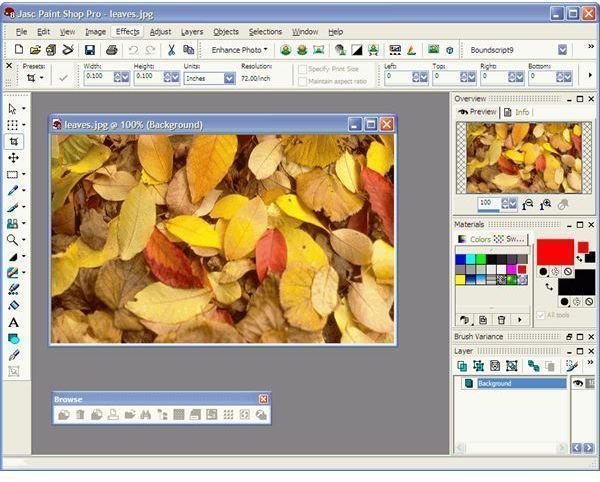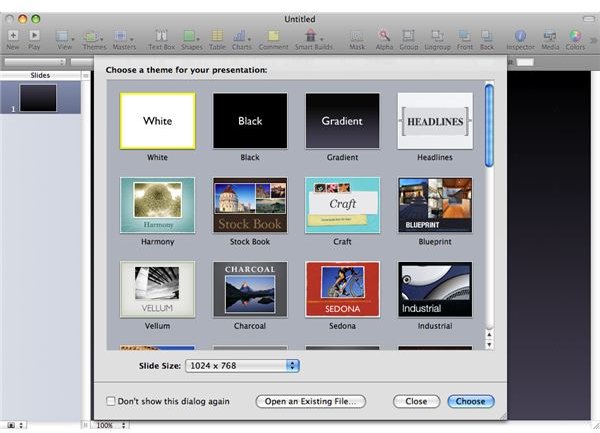Microsoft Office 2008 Mac Sierra
Microsoft Office 2008 for Mac applications: Word, Excel, PowerPoint and Entourage on Mac OS X 10.5 Leopard | |
| Developer(s) | Microsoft |
|---|---|
| Initial release | January 15, 2008; 12 years ago |
| Stable release | |
| Operating system | Mac OS X 10.4.9 or later |
| Type | Office suite |
| License | |
| Website | www.microsoft.com/mac/products/Office2008/default.mspx |
| System requirements[2] | |
|---|---|
| CPU | PowerPC G4 or G5 (500 MHz or faster) or any Intel processor |
| Operating system | Mac OS X10.4.9 or later |
| RAM | 512 MB |
| Free hard disk space | 1.5 GB |
| Optical drive | DVD-ROM (for local installation) |
| Notes | Unofficially runs on PowerPC G3 Macs (like the iMac G3 in Bondi Blue) and with less RAM |
Microsoft Office 2008 for Mac is a version of the Microsoft Officeproductivity suite for Mac OS X. It supersedes Office 2004 for Mac (which did not have Intel native code) and is the Mac OS X equivalent of Office 2007. Office 2008 was developed by Microsoft's Macintosh Business Unit and released on January 15, 2008. Office 2008 was followed by Microsoft Office for Mac 2011 released on October 26, 2010, requiring a Mac with an Intel processor and Mac OS version 10.5 or better. Office 2008 is also the last version to feature Entourage, which was replaced by Outlook in Office 2011. Microsoft stopped supporting Office 2008 on April 9, 2013.
Jan 13, 2020 Features Microsoft office 2008 for Mac. The Microsoft office 2008 edition for Mac systems had a great advantage that the features that were added along with the Mac version seamlessly worked with any type of Mac systems and did not require special needs to work the software through. Installing legacy Microsoft Office 2008 on macOS Sierra. After leaving a company that supplied MS-Office 365, I removed it from my Applications folder according to instructions from the IT support.
Release[edit]
Download Microsoft Office 2008 Mac
Office 2008 was originally slated for release in the second half of 2007; however, it was delayed until January 2008, purportedly to allow time to fix lingering bugs.[3] Office 2008 is the only version of Office for Mac supplied as a Universal Binary.
Unlike Office 2007 for Windows, Office 2008 was not offered as a public beta before its scheduled release date.[4]
Features[edit]
Office 2008 for Mac includes the same core programs currently included with Office 2004 for Mac: Entourage, Excel, PowerPoint and Word.
Mac-only features included are a publishing layout view, which offers functionality similar to Microsoft Publisher for Windows, a 'Ledger Sheet mode' in Excel to ease financial tasks, and a 'My Day' application offering a quick way to view the day's events.[5]
Office 2008 supports the new Office Open XML format, and defaults to saving all files in this format. On February 21, 2008 Geoff Price revealed that the format conversion update for Office 2004 would be delayed until June 2008 in order to provide the first update to Office 2008.[6]
Microsoft Visual Basic for Applications is not supported in this version.[7] As a result, such Excel add-ins dependent on VBA, such as Solver, have not been bundled in the current release.[8] In June 2008, Microsoft announced that it is exploring the idea of bringing some of the functionality of Solver back to Excel.[9] In late August 2008, Microsoft announced that a new Solver for Excel 2008 was available as a free download from Frontline Systems, original developers of the Excel Solver.[10][11] However, Excel 2008 also lacks other functionality, such as Pivot Chart functionality, which has long been a feature in the Windows version. In May 2008, Microsoft announced that VBA will be making a return in the next version of Microsoft Office for Mac.[12]AppleScript and the Open Scripting Architecture will still be supported.
Limitations[edit]
Office 2008 for Mac lacks feature parity with the Windows version. The lack of Visual Basic for Applications (VBA) support in Excel makes it impossible to use macros programmed in VBA. Microsoft's response is that adding VBA support in Xcode would have resulted in an additional two years added to the development cycle of Office 2008.[13] Other unsupported features include: OMML equations generated in Word 2007 for Windows,[14] Office 'Ribbon', Mini Toolbar, Live Preview, and an extensive list of features are unsupported such as equivalent SharePoint integration with the Windows version. Some features are missing on Excel 2008 for Mac, including: data filters (Data Bars, Top 10, Color-based, Icon-based), structured references, Excel tables, Table styles, a sort feature allowing more than three columns at once and more than one filter on a sort.
Benchmarks suggest that the original release of Office 2008 runs slower on Macs with PowerPC processors, and does not provide a significant speed bump for Macs with Intel processors.[15]
A using a program to remove application support files in unwanted languages), and which do not affect Office's operations, but which cause the updaters' installers to believe that the application is not valid for update. A small modification to the installer has been found an effective work-around (see reference).[18]
Another widespread problem reported after SP1 is that Office files will no longer open in Office applications when opened (double-clicked) from the Mac OS X Finder or launched from other applications such as an email attachment. The trigger for this problem is that Microsoft in SP1 unilaterally and without warning deprecated certain older Mac OS 'Type' codes such as 'WDBN' that some files may have, either because they are simply very old, or because some applications assign the older Type code when saving them to the disk. Users have seen the problem affect even relatively new Type codes, however, such as 'W6BN'. Microsoft is apparently looking into the problem, but it is unclear if they will reinstate the older Type codes, citing security concerns.[19]
Another problem with cross-platform compatibility is that images inserted into any Office application by using either cut and paste or drag and drop result in a file that does not display the inserted graphic when viewed on a Windows machine. Instead, the Windows user is told 'QuickTime and a TIFF (LZW) decompressor are needed to see this picture'. A user presented one solution as far back as December 2004.[20]
Microsoft Office 2008 For Mac Sierra

A further example of the lack of feature parity is the track changes function. Whereas users of Word 2003 or 2007 for Windows are able to choose freely between showing their changes in-line or as balloons in the right-hand margin,[21][22] choosing the former option in Word 2004 or Word 2008 for Mac OS also turns off all comment balloons; comments in this case are visible only in the Reviewing Pane or as popup boxes (i.e. upon mouseover).[23] This issue has not been resolved to date and is present in the latest version of Word for the Mac, namely Word 2011.[24]
The toolbox found in Office 2008 also has problems when the OS X feature Spaces is used: switching from one Space to another will cause elements of the Toolbox to get trapped on one Space until the Toolbox is closed and reopened. The only remedy for this problem is to currently disable Spaces, or at least refrain from using it whilst working in Office 2008.[25] Microsoft has acknowledged this problem and states that it is an architectural problem with the implementation of Spaces. Apple has been informed of the problem, according to Microsoft.[26] The problem appears to be caused by the fact that the Toolbox is Carbon-based.[citation needed] Using Microsoft Office with Mac OS X 10.6 Snow Leopard solves some of the problems.[26]
In addition, there is no support for right to left and bidirectional languages (such as Arabic, Hebrew, Persian, etc.) in Office 2008,[27][28] making it impossible to read or edit a right to left document in Word 2008 or PowerPoint 2008. Languages such as Thai are similarly not supported, although installing fonts can sometimes allow documents written in these languages to be displayed.
Moreover, Office 2008 proofing tools support only a limited number of languages (Danish, Dutch, English, Finnish, French, German, Italian, Japanese, Norwegian, Portuguese, Spanish, Swedish, and Swiss German).[29] Proofing tools for other languages failed to find their way to the installation pack, and are not offered by Microsoft commercially in the form of separately sold language packs. At the same time, Office applications are not integrated with the proofing tools native to Mac OS X 10.6 Leopard.
Microsoft Visio is not available for OS X. This means that any embedded Visio diagrams in other Office documents (e.g. Word) cannot be edited in Office on the Mac. Embedded Visio diagrams appear as a low-quality bitmap both in the WYSIWYG editor and upon printing the document on the Mac.
Editions[edit]
| Applications and services | Home & Student | Standard | Business Edition | Special Media Edition |
|---|---|---|---|---|
| Word | Yes | Yes | Yes | Yes |
| PowerPoint | Yes | Yes | Yes | Yes |
| Excel | Yes | Yes | Yes | Yes |
| Entourage | Yes | Yes | Yes | Yes |
| Exchange Server support | No | Yes | Yes | Yes |
| Automator Actions | No | Yes | Yes | Yes |
| Office Live and SharePoint support | No | No | Yes | No |
| Expression Media | No | No | No | Yes |
See also[edit]
References[edit]
- ^'Microsoft Support Lifecycle - Office 2008'. Microsoft. Retrieved February 10, 2018.
- ^'Microsoft Office 2008 for Mac Specs'. CNET. January 15, 2008. Retrieved January 5, 2017.
- ^'It's Coming: Mac BU Announces Intent to Deliver Office 2008 for Mac'. Microsoft. January 9, 2007. Archived from the original on October 11, 2007.
- ^'Microsoft Office 2008 for the Mac delayed until January 2008'. TUAW. August 2, 2007.
- ^'Microsoft starts testing Office 2008 for Mac'. Cnet. April 2, 2007. Archived from the original on September 28, 2007. Retrieved September 19, 2007.
- ^'MS Office Mac Discussion Board'. January 15, 2008.
- ^'Saying goodbye to Visual Basic'. August 8, 2006.
- ^'MS Office Mac Discussion Board'. January 15, 2008.
- ^'Excel 2008 and Solver'. June 26, 2008.
- ^'Solver For Excel 2008 Is Available'. August 29, 2008.
- ^'Solver is Back for Microsoft Excel 2008 on Macintosh'. August 29, 2008.
- ^'Microsoft Office Update, and Visual Basic for Applications to Return - Mac Rumors'. May 13, 2008.
- ^'MS Mactopia Blog'. March 13, 2008.
- ^Known issues in Word 2008 – Equations saved from Word 2007 for Windows do not appear in Word 2008 for Mac
- ^'MS Mactopia Blog'. March 13, 2008.
- ^'CambridgeSoft Website'.
- ^New installer for 12.0.1 (The Entourage Help Blog)
- ^MacFixit article: More Fixes for Problems InstallingArchived January 26, 2009, at the Wayback Machine
- ^http://www.microsoft.com/mac/help.mspx?target=0b9aa757-50ab-443b-8b0e-3a50ece1d5451033&clr=99-4-0
- ^'Archived copy'. Archived from the original on June 26, 2008. Retrieved June 30, 2008.CS1 maint: archived copy as title (link)
- ^'Archived copy'. Archived from the original on July 2, 2009. Retrieved July 9, 2009.CS1 maint: archived copy as title (link)
- ^'IT training – IT training – IT Services – Administrative and academic support divisions – Services and divisions – Staff and students – Home'. Ittraining.lse.ac.uk. May 7, 2010. Archived from the original on February 27, 2009. Retrieved May 30, 2010.
- ^[1][dead link]
- ^http://officeformac.com/ms/ProductForums/Word/11634/0
- ^Bugs & Fixes: Office 2008 and Leopard’s Spaces don’t mix, Macworld, December 8, 2008
- ^ abOffice 2008 for Mac and Mac OS X Spaces, Microsoft
- ^Help and How-To for Microsoft for Mac Office Products Mactopia
- ^Higgaion » It’s official: no RTL support in Microsoft Office 2008 for Mac
- ^Proofing tools that are available for each language
External links[edit]
- MacBU interview: Office 2008 Exchange Server support[permanent dead link]
As of September 25, 2017, macOS 10.13 High Sierra is publicly available for all Mac users to install. Office 2016 for Mac is fully supported on High Sierra. For the best experience, we recommend you update Office to version 15.38 or later.
For updates regarding macOS 10.14 Mojave, see Microsoft Office support for macOS 10.14 Mojave.
Office 2016 for Mac
See 'What version of Office am I using?' if you don't know what version you're on.
Version of Office | Supportability |
|---|---|
15.35 and later | Office 2016 for Mac is fully supported on macOS 10.13 High Sierra. If you encounter issues using Office 2016 for Mac, please send us feedback so we can address them. In Word, Excel, PowerPoint and OneNote, you can click on the Send a Smile icon in the top-right of the app. For Outlook, choose Contact Support from the Help menu. |
15.34 and earlier | These versions are not supported on 10.13. In some cases, you may not be able to launch the Office apps. For example, users will see the following error message when attempting to launch Outlook 2016 ver. 15.34: If you installed Outlook 2016 ver. 15.34 or earlier, and are not being offered an update to 15.35 or later, download the latest Office 2016 for Mac Suite Installer here. |

Office for Mac 2011
Microsoft Office 2008 For Mac
Word, Excel, PowerPoint, Outlook and Lync have not been tested on macOS 10.13 High Sierra, and no formal support for this configuration will be provided.
Since October 10, 2017, Office for Mac 2011* is no longer supported. This means there will be no new security updates, non-security updates, free or paid assisted support options, or technical content updates. Refer to the Microsoft Support Lifecycle for more information.
 2020-4-4 How to use hidden paint app on Mac: Annotate your image. Let's go through the most important editing/markup tools. On the far left you'll find. Classic Microsoft Paint should already be on your Windows PC. In the search box next to Start on the taskbar, type paint and then select Paint from the list of results. If you have the latest version of Windows 10 and want to try something new, open Paint 3D featuring new 2D and 3D tools.
2020-4-4 How to use hidden paint app on Mac: Annotate your image. Let's go through the most important editing/markup tools. On the far left you'll find. Classic Microsoft Paint should already be on your Windows PC. In the search box next to Start on the taskbar, type paint and then select Paint from the list of results. If you have the latest version of Windows 10 and want to try something new, open Paint 3D featuring new 2D and 3D tools.
* Lync for Mac 2011 has a limited time of Extended Support for security fixes.
